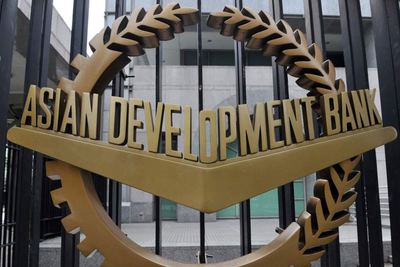The Asian Development Bank (ADB) has lowered its economic growth forecasts for developing Asia and the Pacific amid a worsened global outlook.
The region’s economy will grow 4.2% this year and 4.6% next year, ADB said in a regular supplement to the Asian Development Outlook (ADO) 2022, released today. ADB estimated in September that the economy would grow 4.3% in 2022 and 4.9% in 2023.
Monetary policy tightening by central banks globally and in the region, the protracted Russian invasion of Ukraine, and recurring lockdowns in the People’s Republic of China (PRC) are slowing down developing Asia’s recovery from the COVID-19 pandemic. Restrictions under the “zero-COVID” approach, along with a struggling property market, have led to another downgrade of the PRC’s growth outlook.
“Asia and the Pacific will continue to recover, but worsening global conditions mean that the region’s momentum is losing some steam as we head into the new year,” said ADB Chief Economist Albert Park. “Governments will need to work together more closely to overcome the lingering challenges of COVID-19, combat the effects of high food and energy prices—especially on the poor and vulnerable—and ensure a sustainable, inclusive economic recovery.”
ADB lowered its forecast for inflation in developing Asia and the Pacific this year to 4.4% from 4.5%. However, the bank raised its projection for next year to 4.2% from 4.0%, due to lingering inflationary pressures from energy and food.
The PRC’s economy is forecast to expand by 3.0% this year, compared with a previous projection of 3.3%. The forecast for next year was cut to 4.3% from 4.5%, due to the global slowdown. Gross domestic product growth projections for India were maintained at 7.0% this fiscal year and 7.2% next fiscal year.
Even with the downgraded forecasts, developing Asia will still do better than other regions globally, both in terms of growth and inflation. ADB’s growth forecast for Southeast Asia this year was raised to 5.5% from 5.1%, amid robust consumption and tourism recovery in Malaysia, the Philippines, Thailand, and Viet Nam. Projections for next year, however, were lowered to 4.7% from 5.0% due to weakening global demand. The growth forecast for the Caucasus and Central Asia this year was upgraded to 4.8% from 3.9%, while the projection for the Pacific was raised to 5.3% from 4.7%, due to a strong tourism recovery in Fiji.
ADO is published every April, with an update in September and brief supplements published normally in July and December. Developing Asia refers to the bank’s 46 developing members.













